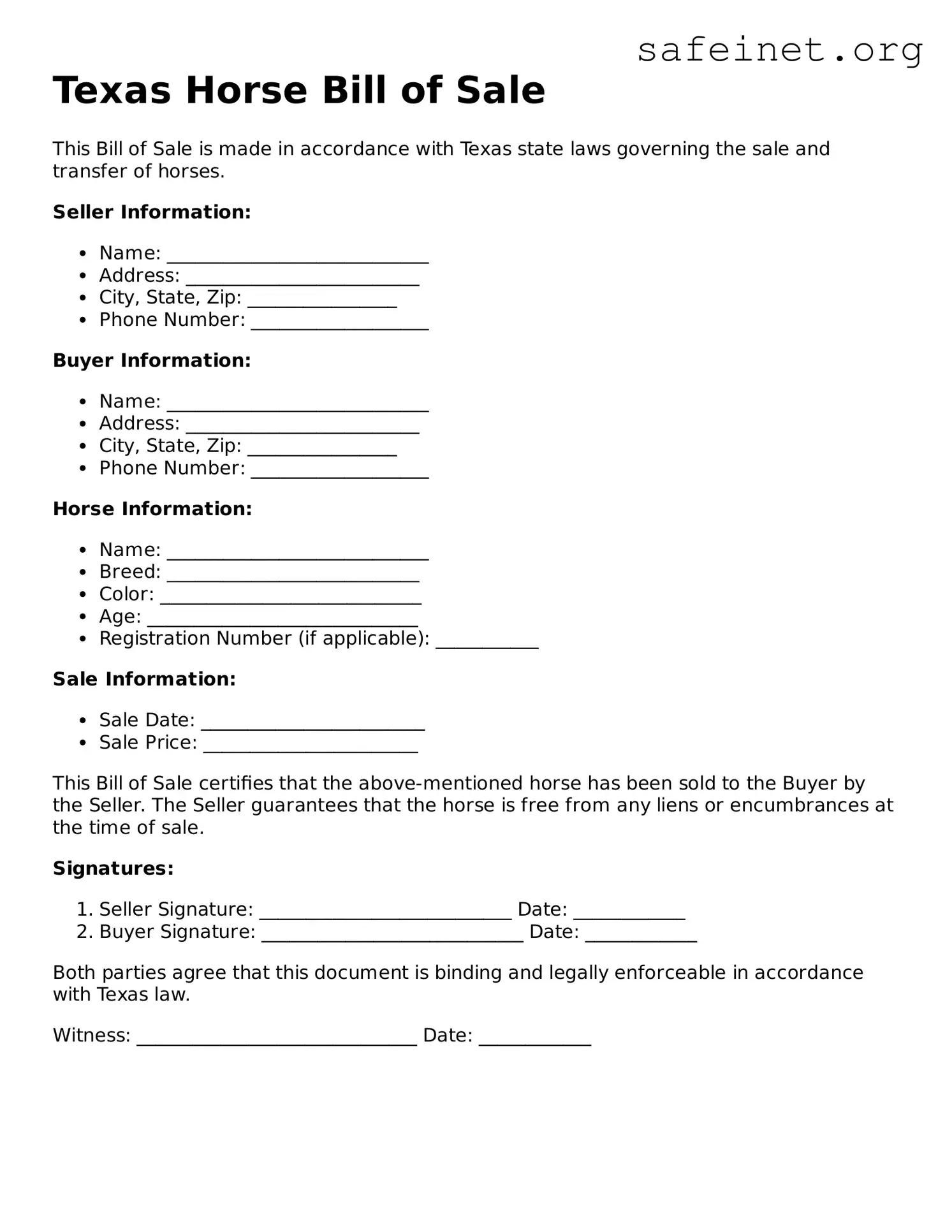What is a Texas Horse Bill of Sale?
A Texas Horse Bill of Sale is a legal document that serves as proof of the transfer of ownership for a horse from one party to another. It includes specific details about the horse, the seller, the buyer, and any agreed-upon terms related to the sale. This form is essential for both parties to ensure that the transaction is clear and legally enforceable.
What information should be included in a Horse Bill of Sale?
Essential information typically includes the names and addresses of the seller and buyer, a description of the horse (including breed, age, color, and any identifying marks), the sale price, and the date of the transaction. The bill may also list any warranties, representations, or guarantees made by the seller regarding the horse.
Is a Horse Bill of Sale required in Texas?
While a Horse Bill of Sale is not legally required for a sale to occur in Texas, it is strongly recommended. Having this document protects both the buyer and seller by providing clear evidence of the agreement. In cases of disputes, a Bill of Sale can serve as important documentation.
Do I need to have the Bill of Sale notarized?
Notarization is not mandatory for a Texas Horse Bill of Sale. However, having it notarized can provide an extra layer of protection and authenticity, especially in disputes. It can serve as evidence that both parties were involved in the agreement and that the document was executed willingly.
Can I use a Bill of Sale from another state for a Texas horse sale?
Using a Bill of Sale from another state can work, but it’s best to check that it meets Texas requirements. Each state may have slightly different laws and formats for these documents. To avoid complications, consider using a Texas Horse Bill of Sale form that complies with local regulations.
What should I do after the sale is complete?
After completing the sale, both the buyer and seller should keep a copy of the signed Horse Bill of Sale for their records. The buyer should also update any relevant registrations or identification papers related to the horse, ensuring that they are listed as the new owner. Keeping this documentation organized aids in avoiding potential future disputes or confusion.
Can a Horse Bill of Sale include terms for payment plans or financing?
Yes, a Horse Bill of Sale can include terms for payment plans or financing arrangements as long as both parties agree to the terms. This should detail the payment amounts, dates, and any interest associated with the financing. Be clear about the expectations to ensure that both parties understand their responsibilities.
